The evolution of Soviet tanks and the test report of the T-62
In recent years, most Western countries have experienced great difficulties in the development and production of new battle tanks, which would be equal or even superior to tanks produced at factories of the Warsaw Pact countries. The principle was and still remains the same - to make a new car that would significantly surpass the previous tank. However, it is expensive from a financial point of view and a long time. Western countries are increasingly seeking to implement joint projects in an attempt to reduce the final cost of production, but to date, all these projects have failed, which has led to further delays. To date, only one joint project can be called active, the French and Germans are trying to design a tank for the 90's, although current signs indicate that it can be doomed to failure. As a result, individual countries intend to independently implement projects and produce more expensive vehicles in sufficient quantities in order to achieve at least some balance with the huge number of modern tanks deployed by the Soviets and their allies under the Warsaw Treaty.
The Soviet Union has not yet joined the “disposable things society” and, as such, has a different point of view. The old material part is almost completely preserved. Efficient and proven components in one project for the most part go into the next generation of machines. The motto of Soviet industry is simplicity, efficiency and quantity. Therefore, the design of Soviet tanks was both evolutionary and tends to remain so even with the advent of the T-80 tank.
History of development
This trend began during World War II with the advent of the T-34 tank. It was a very simple base machine, capable, however, of performing all the tasks of machines of this category. This light tank was cheap to manufacture and easy to operate. Crew training was minimal and the Soviet army had no difficulty in finding the crew members needed to control the huge number of vehicles produced. In the “tank to tank” battle, they did not match the capabilities of the heavier and more advanced German vehicles, but the Germans quickly realized that when their tanks were over, the enemy still had a certain number of T-34 tanks. The modified T-34 tank, designated T-34 / 85, was adopted in the 1944 year and, although it was decommissioned by the Soviet army in the 60-s, it remained in the Vietnamese army until the 1973 year. The successor of the T-34 tank went into production also in the 1944 year. It was a modified T-34 / 85, which received the designation T-44. The appearance of the tower has not changed much, but the suspension of the Christie type has been replaced by a torsion bar suspension and, accordingly, the body has become lower. Later, unsuccessful attempts were made to install the T-44 100-mm D-10 gun in the turret. The solution, in the end, was found by installing a modified turret with a D-10 gun on the elongated T-44 body, resulting in a new machine, designated T-54.
This tank was made in huge quantities, six variants were developed before the T-55 tank appeared, which was first shown in Moscow in November 1961. Subsequently, three more versions of the T-55 tank were made. The only main difference between the T-54 tank and the T-55 version is the installation of an increased power B-55 engine. Subsequently, all T-54 tanks were modified to the T-55 standard, which led to the fact that vehicles of this type in the West received the designation T-54 / 55. However, this tank was unpopular in many countries in which it was sold. In his book “Modern Soviet Armored Vehicles”, Stephen Zaloga cites the case of Romania “having such serious problems with T-54 tanks that it was necessary to invite several West German companies to participate in the competition in order to completely remake existing vehicles that received a new suspension, tracks, wheels, engine and other components. ”
T-62
The same basic design was then used in the production of the T-62, first shown in the 1965 year. The main difference was an increase in the caliber of the main gun, instead of the 100-mm gun D-10Т, the 115-mm smoothbore gun U-5TS (2А20) was installed. Many components of the T-55 were transferred to the T-62 tank, and it is clear that this was the beginning of a new trend in the production of tanks: limited production of experimental vehicles, manufacturing of several options, determining the optimal combination of systems and then deploying a new tank in which all subsystems went through extended tests, often in combat conditions, without the costs typical of Western countries for conducting evaluative tests with almost the destruction of prototypes.
In a recent test drive of the T-62 tank, our magazine found out that it was truly basic in its design and manufacture. External components did not create any sense of completeness and were for the most part rather fragile. This corresponds to the Soviet design philosophy, which determines that external components are not so important and will be the first to be sacrificed in battle. Therefore, you should not spend time, money and effort on the production of the final product. However, the tank was designed taking into account the maximum use of the terrain. A small rounded-shaped tower provides maximum protection against ricocheting hits, and the body with Christie's suspension and without upper guide wheels has a low squat configuration. This provides a low projection of the tank and makes it very difficult to detect when the tank is in a half-closed position. But there is also the flip side of the coin, such a layout makes the work of the crew in the tank very uncomfortable. Inside the tower, space is extremely limited. The gunner operator, sitting on the left and below the commander, has little room for work. Indeed, the commander’s and gunner’s jobs, taken together, are hardly more than the commander’s position in most Western tanks. Charging on the right side of the tower has more space, but, nevertheless, it is extremely difficult to work with a left-hander.
The driver's seat is located on the left side. Its seat can be adjusted for driving with your head hanging out (normal position) or with the sunroof closed while the tower is operating.
Typically, the T-62 tank is started using compressed air with a minimum pressure of 50 kg / cm2. In our tests, however, the tank had to start up “from the pusher”, because there was insufficient pressure in the cylinders with air. The driver checks the operation of the systems and then starts the engine, after making sure that the oil pressure in the engine is within 6-7 kg / cm2. If starting with air fails, an electric starter can be used.
As a rule, in most tanks, the first gear is designed for emergency situations. In order to start driving, the second gear is selected and the 550-600 rpm is set using the manual throttle. At this point, a Western-made tank driver warmly thanks the designers for the invention of the automatic transmission. The T-62 tank has a gearbox without synchronizers, and to change gear, the driver must depress the clutch pedal twice. Switching from second to third gears was a bit complicated, but when it was necessary to switch to fourth gears, our driver found that the lever needs to be moved across the entire width of the wings and the shift is extremely tight. There is no doubt that this feature caused rumors about it. that the drivers of the T-62 carry a sledgehammer with which they move the lever to the desired position. One user informed us. what kind of training course is driving the T-62 tank in the US Army, the clutch changes at least twice.
The steering is carried out by two levers. They have three positions. When they are fully advanced, all rated power is transmitted to the drive wheels (sprockets). To turn one of the levers must be moved to the first position. If both levers are in the first position, then downshift is engaged and the tank slows down. From this position, a turn with a smaller radius can be made by pulling the lever even further forward into the second position. The second position actually slows down the tracks and you need to pay attention to ensure that one of the levers is not moved to the second position if the tank is in fourth or fifth gear, as the resulting turn may be too steep. (It’s far from the fact that the tank will drop the caterpillar in these circumstances, since the correctly stretched caterpillar, that is, when 60-80 mm hangs over the first support roller, is guided along the entire length by internal guides, running along the top and bottom of each support roller.) Our at first it seemed strange to the driver that he had to transfer both levers completely to the first position before starting a turn, which occurs due to the translation of one of them into the second position. During rotation, greater acceleration was also required to maintain speed, which in turn led to the release of a cloud of black smoke.
We were unable to verify the effectiveness of the hydropneumatic coupling in the T-62 tank. because while driving, cylinders for compressed air were charged. This clutch engages after starting off when the driver moves the lever mounted on the clutch pedal with his foot. It seems that using this clutch does not facilitate gear shifting, but reduces its wear.
Thus, maneuverability does not apply to the strengths of the T-62 tank. Driving a car is tiring and driving is relatively uncomfortable.
The T-62 tank is lightly armored and passive protection is largely provided by its low projection. Active protection to some extent is provided by the thermal smoke equipment of the engine. It consumes 10 liters of fuel per minute and creates a smokescreen 250-400 meters long and lasts up to 4 minutes depending on the strength of the wind. When this system is operating, the driver must be in gear no higher than third, and also take his foot off the gas pedal to avoid engine shutdown due to lack of fuel.
In case of actions in the infection zone weapons A mass destruction PAZ system protects the crew from radioactive dust sa due to air filtration and slight overpressure. It is automatically turned on by the RBZ-1 gamma radiation sensor.
A V-12В 55-cylinder engine with a maximum output power of 430 kW at 2000 rpm is installed on the machine, allowing to develop a maximum speed of 80 km / h. When driving over rough terrain, fuel consumption ranges from 300 to 330 liters per 100 km. It is reduced to 190-210 liters when driving on roads. With full fuel tanks, the T-62 can travel from 320 to 450 km. Cruising range increases to 450-650 km when two dump fuel tanks are installed at the rear of the machine.
The maximum range of the 115-mm U-5TS gun is limited by the aiming range of the gunner’s sight TSh2B-41U and is 4800 meters when firing a high-explosive fragmentation projectile, although it is unlikely that this extreme range will ever be used except when the tank is on a stationary fire positions (typical Soviet tactics) :. Consequently, the theoretical maximum range of actual fire on the tank is 2000 meters, although Middle Eastern experience shows that this figure is closer to 1600 meters. Ammunition is 40 unit rounds with sub-caliber, armor-piercing, cumulative high-explosive shells. It is stacked in open racks around the tower and the hull; and experience has shown that even a sliding projectile strike at a small meeting angle can cause detonation of ammunition. Of these, 20 are placed in a rack-mounted installation near the partition of the engine-transmission compartment, according to 8 - in two rack tanks on the right side of the control compartment, one each in the collar stacks in the lower part of the sides of the fighting compartment and two more in the collar stacked on the right side towers. Also in the tank is placed up to 2500 7,62-mm cartridges for coaxial machine gun GKT. The T62 version is additionally armed with an 12,7-mm anti-aircraft machine gun with an ammunition box for 500 cartridges mounted on the turret of the loader.
T-64 and T-72
Even before the first T-62 tank was shown to the public, it became known in the West that a new Soviet tank was developed under the designation M1970. According to some sources, this project has never been manufactured, but the serial production of the tank began at the end of the 60's. It was very different from all previous Soviet tanks, had a new chassis and a new turret armed with an 125-mm cannon. The appearance of this tank made analysts in the West think hard. A new dimension was added to the definition of “threat”, and calls were made in the corridors of power from Bonn to Washington for the production of more powerful and more secure tanks to fight this new machine.
Over the next few years, Western military organizations gave this tank the designation T-72, but something like shock happened when the second new machine was shown in Moscow in the 1977 year. At first glance, the second car could pass for a new version of the T-72, but a more thorough analysis revealed significant differences between the two tanks. This triggered a change in Western indices and the earlier machine was designated the T-64.
The main differences between the T-64 and T-72 are in the engine and chassis. The photographs show that the location of the exhaust exhaust grilles at the rear of the machine is different, indicating that another engine could have been installed. Perhaps the T-64 has a diesel engine with a maximum output of 560 kW and specific power of 15 kW / t. According to our sources, this five-cylinder engine with horizontally opposed opposed cylinders is what distinguishes it from traditional tank engines. On the contrary, the T-72 tank is equipped with a B-64 engine, a variant of the B-55 diesel engine of the T-62 tank, but with increased power. It develops a power of 580 kW at 3000 rpm, which entails a specific power of 14 kW / t.
The T-64 tank has six small, stamped twin track rollers on board and a torsion bar suspension. The double track steel track is supported by four support rollers. The chassis of the T-72 includes six large cast twin track rollers on board and also a torsion bar suspension. The single-finger steel track is supported by just three support rollers. Modifications of the tower are minimal and consist in the transfer of an infrared searchlight, for the T-64 it was to the left of the main gun, for the T-72 it was installed to the right of the gun. Also installed another anti-aircraft machine gun. The T-72 tank has a new 12,7-mm machine gun on an open turret behind the commander’s turret. Fire from it, as on the T-62 tank, is possible only with the hatch open. On the T-64, the anti-aircraft machine gun is also mounted on the commander’s turret, but apparently it is remotely controlled.
The main and twin weapons are identical for both tanks. 125-mm smoothbore gun can fire armor-piercing sub-caliber, cumulative and high-explosive fragmentation shells. The initial velocity exceeds 1600 m / s for armor-piercing and 905 and 850 m / s for cumulative and high-explosive shells, respectively. The coaxial 7,62-mm PKT machine gun is the same as on the T-62 tank mounted coaxially to the right of the gun. Apparently the commander is responsible for the operation of the coaxial machine gun. The automatic loader delivers shots to the cannon, although the systems of these two tanks differ in how they work. In the T-72 tank, charges and shells are stacked in cells for one shot, a charge above the shell. A carousel with 40 such cells is installed on the floor of the tower. Shells of different types do not stack in a specific order, because the computer tracks the position of each shot. After the commander selects the type of shot he wants to shoot, the computer indicates the position of the nearest one and the rotating carousel rotates until the cell is under the loading mechanism. The barrel rises to the original vertical angle 4 °, then the cell is pulled up until the shell touches the back of the breech. The pivot arm sends it to the barrel and the cell then drops slightly, allowing the charge to be sent in the same way. The loading mechanism of the T-64 tank is apparently more complex. The projectile is stored vertically next to the charge, which means that the projectile must be turned before being blown up and the charge sent after it.
Some analysts believe that the T-64 was made as an intermediate solution, somewhere between the T-62 and the T-72. Recent observations may lead to this contradictory conclusion and it is possible that the T-72 is the next model after the T-62, and the T-64 is just a step away from the evolutionary chain.
The first photographs confirming the existence of the T-64 tank appeared in the West in the early 1970's, although it could have been deployed even earlier. Since then, the T-64 tank entered the arsenal of the Soviet army in large quantities. According to some estimates, over the 1979 year, over 2000 of these tanks were deployed in the GSVG. On the contrary, many photos of the T-72 were released. For some reason, the T-72 is often on display. He, for example, was demonstrated during the visit of the French Minister of Defense to Moscow in 1977, where he and his retinue were shown the T-72 tank, although they were not allowed to look inside. The T-72 was also exported to countries outside the Warsaw Pact. Our sources claim that the current selling price of the T-72 is approximately two million dollars. Photos of the T-72 with the new tower were also published, which show that the reserve stadiometric rangefinder was removed. This publication in a purely Soviet style suggests that another tank, possibly a deeply modified version of the T-64, should become a standard Soviet battle tank. It has been suggested that the original T-64 tank is experiencing many operational problems and this is carefully hidden from prying eyes. These problems were named: poor accuracy of a powerful smoothbore gun; tendency to drop tracks; and among other things, the catastrophic unreliability of the engine, which also smokes mercilessly. Criticism of the T-64 tank hints that they initially wanted to make it the main battle tank of the Soviets, but its performance and reliability were so poor that the upgraded T-55 tanks and subsequently exported T-72 tanks were to be openly operated instead of the T-64. Apparently, the T-64 tanks in the GSVG are only training tanks, and their more advanced followers are already secretly stored at the forefront.
T-80
More than 10 years. It has passed since the adoption of the T-64 tank, and it is known that a new Soviet tank already exists today. What is this tank? In the West, he received the designation T-80 due to the lack of more reliable information.
The T-80 is armed with the main high-pressure 125-mm cannon, which fires advanced types of ammunition, including depleted uranium core BOPs. According to some reports, the tank weighs about 48,5 tons and may have a hydropneumatic suspension. In the Soviet Union, experiments were conducted on the installation of gas turbine engines. Two T-80 prototypes were made for testing, one with a gas turbine engine and the other with a high-power diesel engine similar to the engine mounted on a T-64 tank. However, it is unlikely that the turbine engine will become the standard engine of the T-80 tank.
The most significant change is the addition of composite armor to the hull and turret, explaining the increase in mass and giving the machine a box-shaped modern NATO tanks. This armor can either be very similar to the British Chobham armor, samples of which came to Russia from the territory of the Federal Republic of Germany, or it can be special Soviet-made multilayer armor, from such armor, for example, the frontal front sheets of T-64 / 72 tanks are made. According to the descriptions, the T-80 tank is similar to the T-64 or T-72 with additional armor and this is most likely true, especially considering the appearance of the T-72 with a new turret.
The study of the evolutionary scheme shows that it is quite possible to take the hull of one machine, in this case the T-64, and a new tower (or the deeply modernized T-72 tower) is installed on it, resulting in a new tank. It is also likely that the T-64 chassis received new small track rollers and an engine. The T-72 engine is unlikely to enter its engine and transmission compartment, and as a result, a further increase in power in order to cope with the excess mass of the T-80 tank will be impossible.
The drawing of the T-80 tank, according to those who saw photos of a real car, is very similar to the original. We pay special attention to the small track rollers, most likely from the T-64, and the lack of protective side screens. The main armament is the new 125-mm high-pressure gun, which is a further development of the cannons of the T-64 and T-72 tanks, capable of firing improved ammunition. The lack of an infrared spotlight hints at the use of night sights with enhanced image brightness or thermal imaging. Another interesting element is two groups of smoke grenade launchers. Until recently, all Soviet tanks used thermal smoke equipment to set the smoke screen. However, the T-64 tanks in the GSVG were spotted with smoke grenade installations. It is possible that these T-64 are equipped with new engines that are not compatible with thermal smoke equipment, and the same engine is installed in the T-80 tank.
Evolutionary benefits
The main goal of the designers of Soviet tanks, apparently, is to design and manufacture tanks as quickly and cheaply as possible without reducing the number of tanks in service. The evolutionary concept has allowed them to realize this, as well as other advantages. First of all, a certain level of standardization is always maintained, as a result of which time and efforts are not wasted in vain on the complete retraining of crews from one type of machine to another. The Soviet army has on balance a lot of tanks used as training vehicles. Thus, the risk of damage to the main models is eliminated and at the same time, high qualification of crews and training in skills that are necessary for the operation of tanks are maintained. This concept also provides designers with the ability to thoroughly test components, accept or reject them for successful generation machines.
The last innovative Soviet tank was the T-64 and therefore there is no reason to believe that the T-80 is also completely innovative; rumor has it that his successor is ready for production.
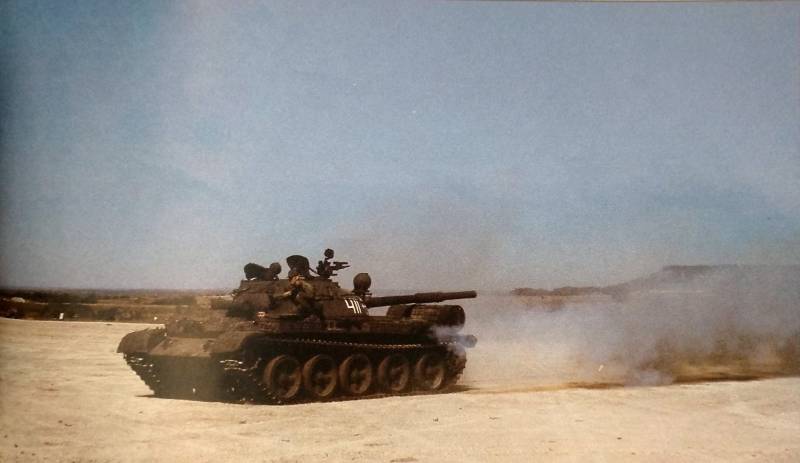
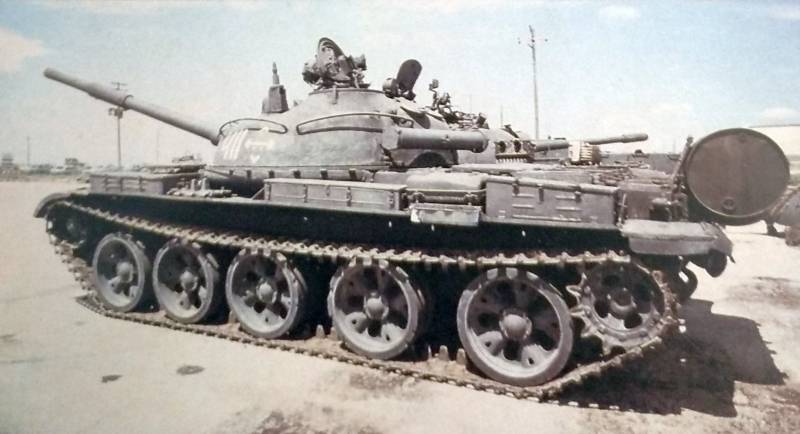
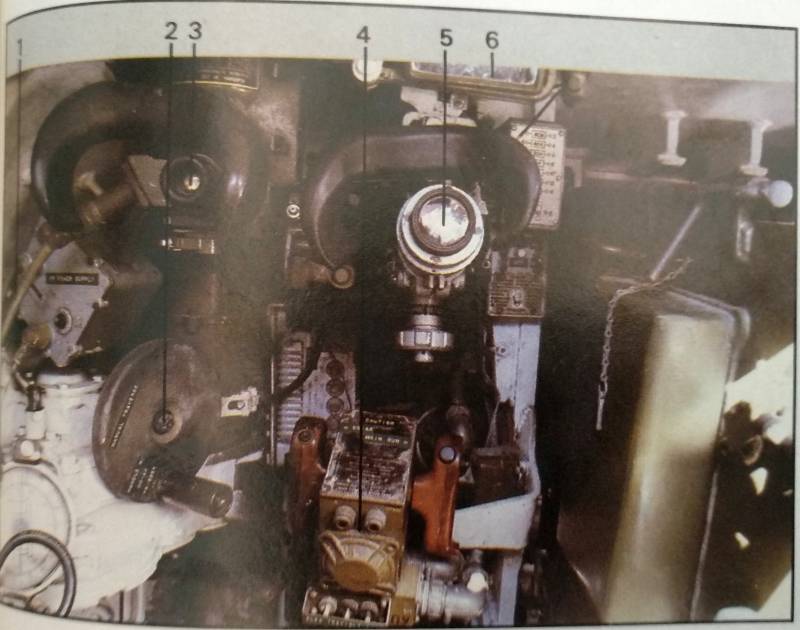
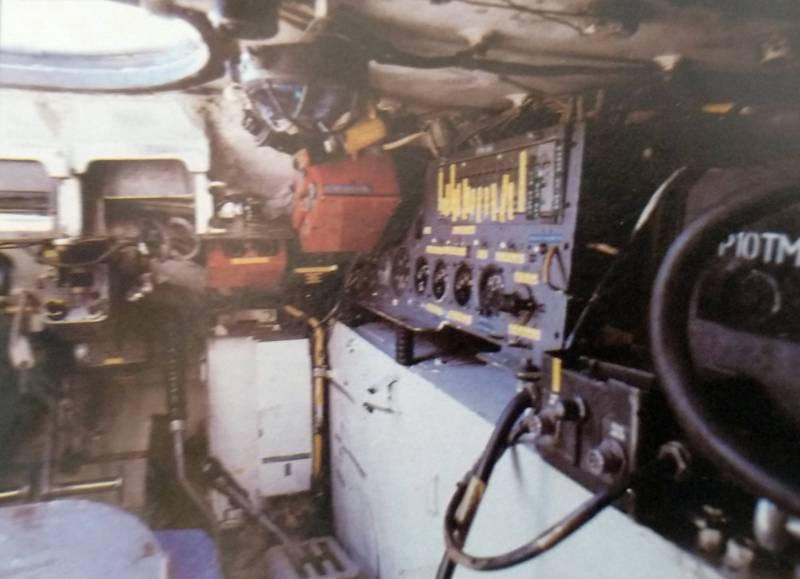
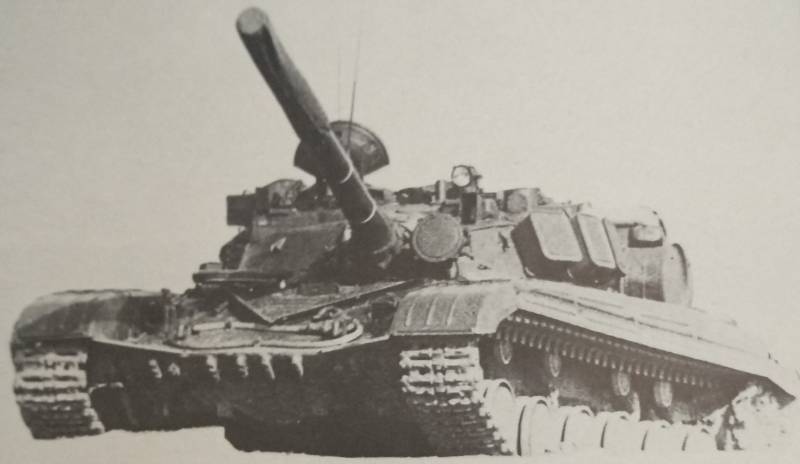
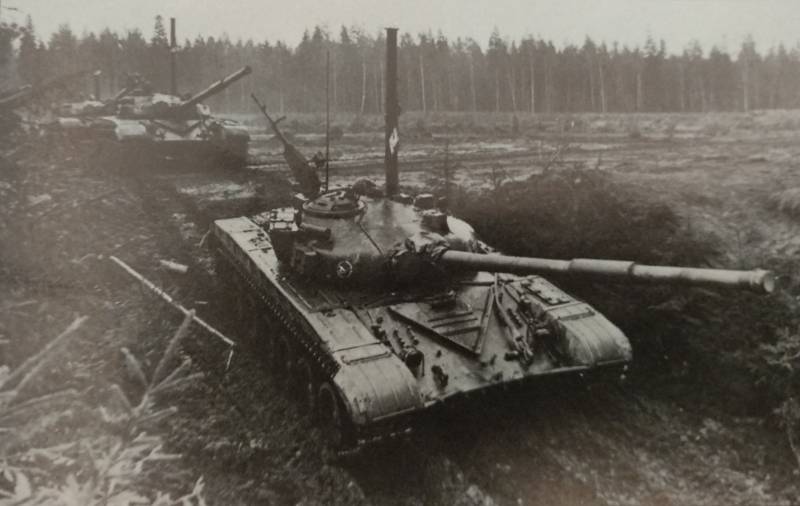
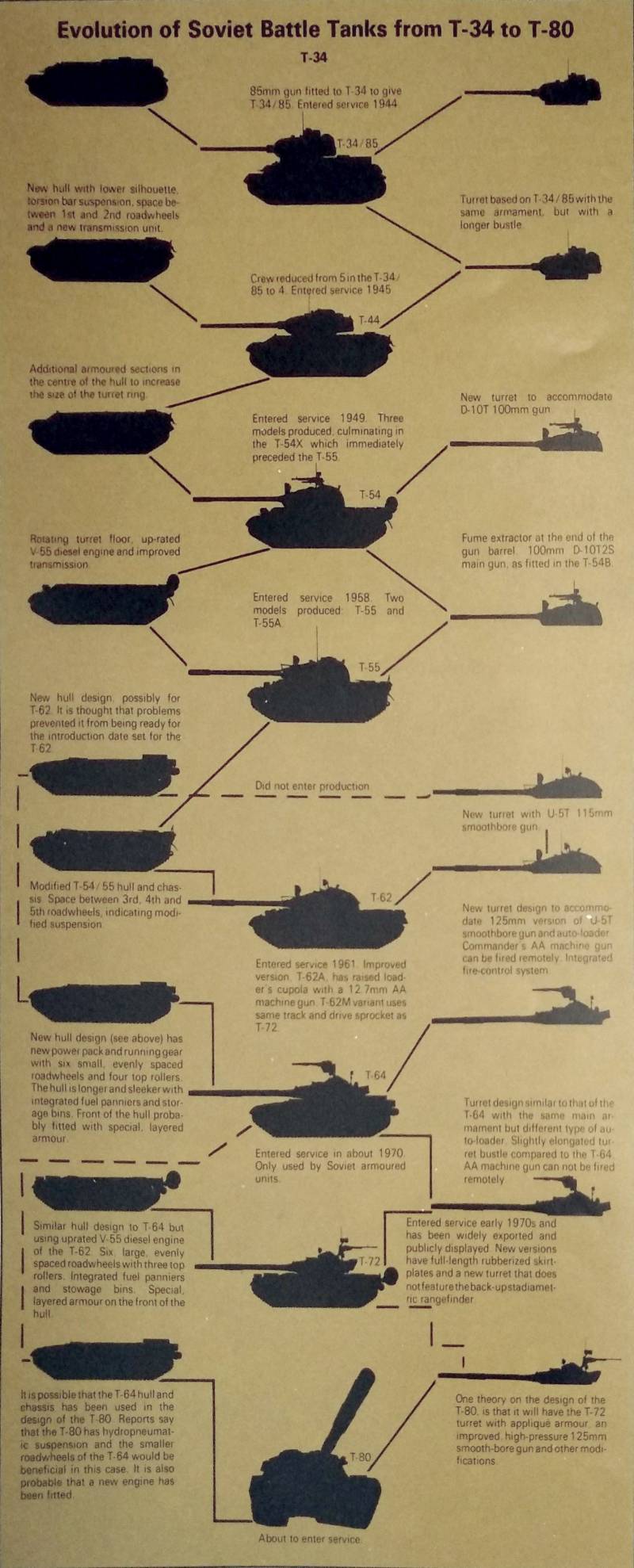
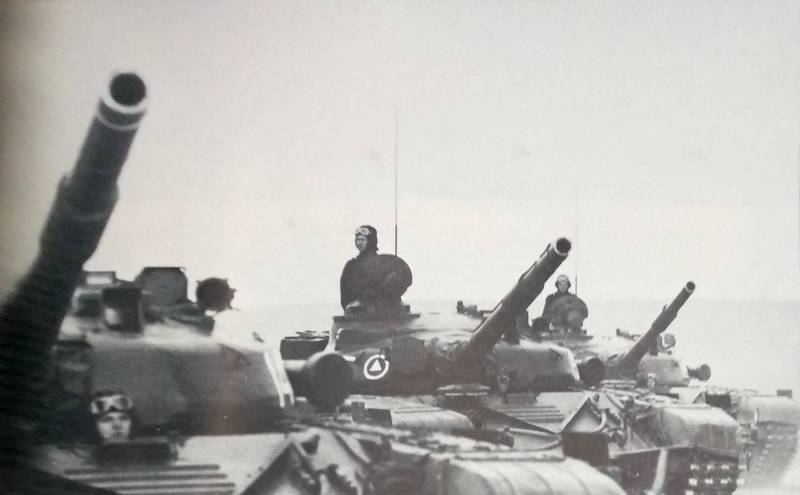
Information